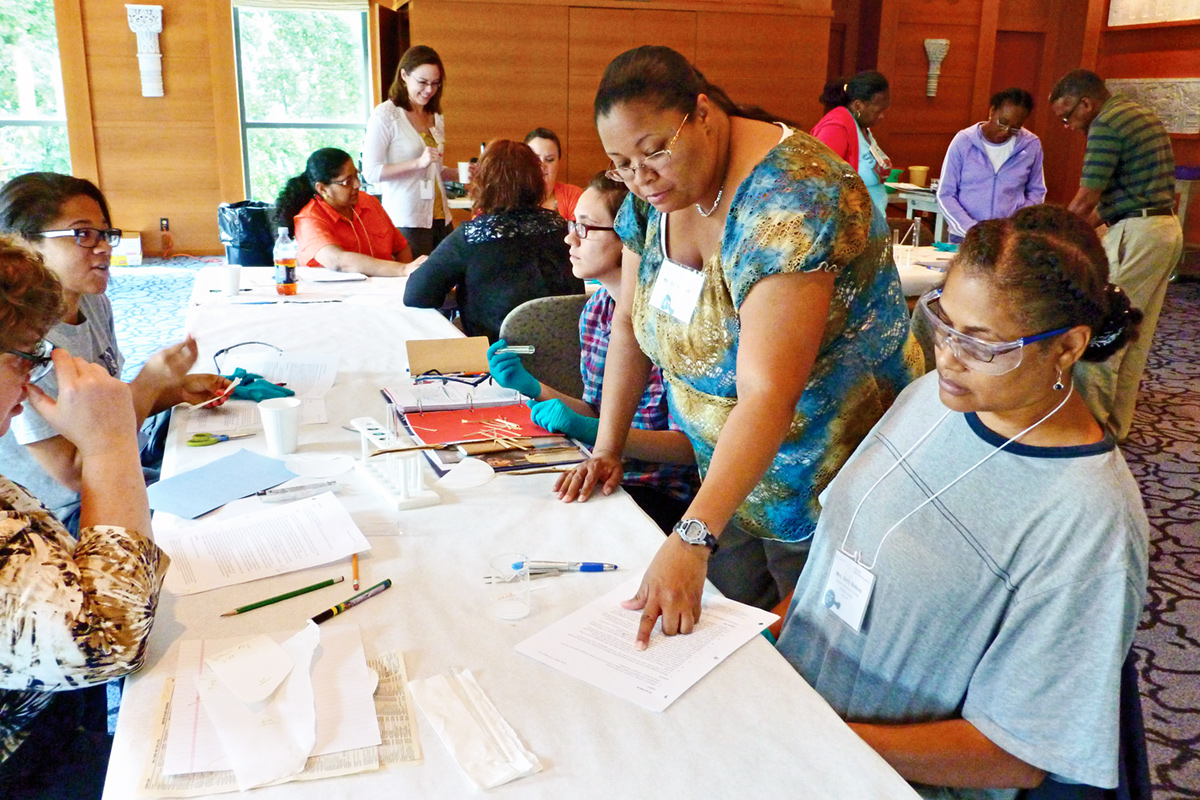The Art of Teaching Science

A partnership between the Michael C. Carlos Museum and Emory’s Center for Science Education (CSE) is turning STEM into STEAM—by injecting the arts into science, technology, engineering, and mathematics.
Carlos conservators, an Emory student, and a high school science teacher teamed up to provide Atlanta-area teachers with creative science education resources, including hands-on activities based on art conservation projects for high school science labs. The activities are designed for teachers of biology, chemistry, and environmental science.
The collaboration has been unfolding since a CSE teacher workshop funded by the Howard Hughes Medical Institute (HHMI) brought a group of secondary school teachers to various research labs on Emory’s campus—including that of Carlos conservator Renée Stein.
“There was clearly interest and enthusiasm in using art conservation as a context for teaching science,” says Stein.
The CSE awarded DeKalb County science teacher Tiffany Smith an HHMI fellowship to spend six weeks in the Carlos lab with Julia Commander 13C, the Carlos’s Andrew W. Mellon intern. Smith and Commander worked with Stein and assistant conservator Katie Etre to write teacher and student guides for eight different topics, using photographs of objects from the museum to illustrate them: adhesives, corrosion, fibers, insects, paper, pigments, salts, and wood.
“As a classroom teacher, it is often difficult to get students to understand the correlation between science and the real world,” Smith says. “Collaborating with the conservator team at the museum allowed me to bring the very real world of art conservation into my classroom.”
The learning units the team created are now offered in workshops and on the Carlos website under “Science & Art Conservation: Resources for Teachers.”



